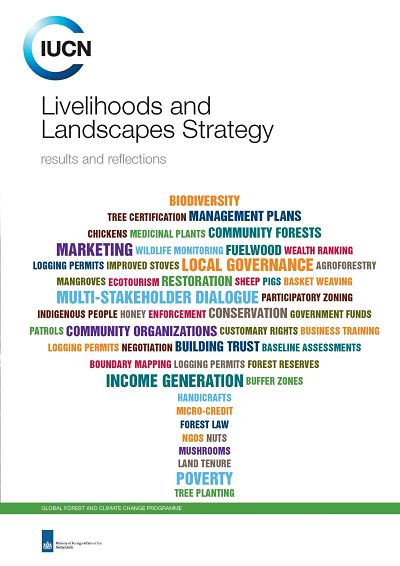Livelihoods and Landscapes Strategy - Results and Reflections
Are forests just an economic safety net for the poor? How much are forests actually worth, on a global scale?

Photo: IUCN
These are the kinds of questions that the Livelihoods and Landscapes Strategy (LLS) set out to explore (the short answers to these two are provided on the opposite page). But LLS was by no means an academic exercise; instead, it was developed to provide hard evidence of the value of forests and the need to take these multifunctional assets into account in national and local policymaking.
The ultimate goal of this learning strategy was to have policies in place that recognize – and make provisions for – local people’s forest use, while also ensuring forest conservation and sustainable use to meet national development objectives. At the same time, LLS was designed to strengthen the resilience of local livelihoods and forest landscapes in many different parts of the world, to bring lasting change to people’s lives and safeguard the resources on which they depend.
LLS, implemented by IUCN (International Union for the Conservation of Nature) and funded by DGIS (Ministry of Foreign Affairs of the Netherlands), ran from 2007 to end 2011. The scope of LLS was structured around four main themes:
• poverty reduction;
• natural resource-based markets and incentives;
• forest governance (including forest rights and tenure); and
• landscape transformation (through policy influence and forest landscape restoration).
Rather than a collection of new projects, the Strategy was designed to transform and add value to existing activities by IUCN and its partners and to attract new investments and initiatives as additional financial leverage to help support the Strategy’s objectives. IUCN worked with more than 60 partner organizations in the implementation of LLS, in 27 landscapes and 23 different countries in Africa, Asia and Latin America. A tailor-made set of activities was developed for each landscape, according to the interests and needs of key stakeholders and the specific biophysical, socio-economic and governance conditions present. Common activities included for example negotiation of local access rights, support for locally-controlled forest management and restoration, and the development of income generating activities (such as the marketing of non-timber forest products or the development of forest-related jobs).
A highly ambitious set of strategic outcomes was established at the outset of LLS. While it is difficult to predict the long-term impacts of the Strategy given its relatively short duration, it is possible to show that seven of these eight outcomes were achieved or surpassed, with the eighth one having been only narrowly missed. On top of these achievements, LLS helped advance REDD+ and climate change agendas in several countries and notable biodiversity gains were perceived in numerous landscapes; these results went beyond the core scope of the Strategy and were co-benefits of its holistic approach.
This summary highlights the Livelihood and Landscape Strategy Final Report (2007-2013)



